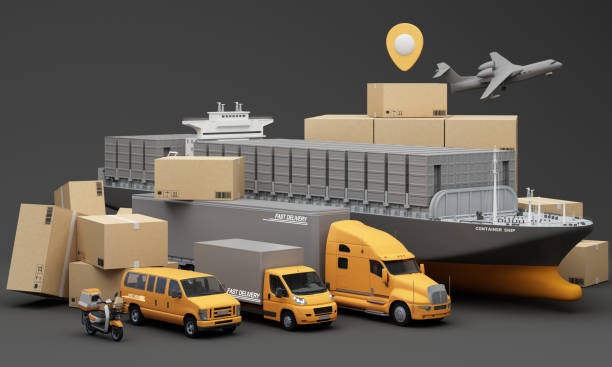Key Takeaways
- Due to growing trade volumes, cross-border freight shipping is becoming more crucial for North American supply chains.
- Technological advancements and regulatory updates are significantly impacting freight operations between countries.
- Challenges such as customs clearance and environmental considerations require strategic planning and reliable partners.
Table of Contents
- The Rise of Cross-Border Freight Shipping
- Key Challenges in International Freight
- Technology Transforming Freight Shipping
- Best Practices for Smooth Border Transit
- Regulations and Compliance Across Borders
- Environmental Considerations in Freight Logistics
- Tips for Selecting a Reliable Freight Partner
- Future of Cross-Border Shipping in North America
The Rise of Cross-Border Freight Shipping
Over the last decade, freight shipping across North American borders has expanded in volume, complexity, and importance. With businesses increasingly sourcing materials or selling goods internationally, there is an urgent need for shipping solutions that offer reliability, speed, and regulatory compliance. This expansion is evident as companies seek reliable freight from California to Canada, leveraging routes that connect major manufacturing hubs with growing consumer markets. The demand for seamless logistics across multiple countries has never been higher, highlighting a shift where shipping is no longer a simple operational detail but a key strategic decision for long-term success.
To facilitate this growth, significant government resources are dedicated to upgrading roadways, border facilities, and digital tracking systems that support greater freight efficiency. Billions of dollars are earmarked for transformative rail and highway improvements explicitly designed to enhance the flow of goods across borders. Improved infrastructure helps reduce bottlenecks, increase safety, and allow businesses to adapt to shifting supply and demand. The benefits extend beyond big cities—rural suppliers and small manufacturers can better access international markets, helping them compete globally.
Key Challenges in International Freight
Despite monumental improvements, international freight shipping still faces ongoing, multifaceted challenges. Customs regulations are complex and frequently change, requiring continual education and process refinement. Each shipment requires accurate and thorough documentation, and even minor errors in paperwork can stall loads for days or incur unnecessary fees. Recent U.S. Customs and Border Protection data illustrates that most delays and supply chain interruptions at borders are tied to incomplete or inaccurate filings, underscoring the critical need for attention to detail.
Tariffs and trade agreements are also sources of unpredictability. As international relations and trade priorities evolve, businesses must adjust quickly to remain profitable and compliant. Language differences and regional customs standards can require additional resources to translate and interpret shipping documents. For organizations moving high-value or time-sensitive goods, partnering with a freight provider that proactively handles regulatory updates and communication barriers often becomes a non-negotiable aspect of operations.
Technology Transforming Freight Shipping
The logistics industry is undergoing a digital transformation, and those who fail to embrace change risk losing ground to competitors who leverage new tools for greater efficiency. Today’s global supply chains rely on real-time GPS tracking, advanced inventory management platforms, automation in customs clearance, and predictive analytics to optimize routes and schedules. For instance, the widespread adoption of GPS-enabled fleet management gives managers and customers complete visibility into every leg of the delivery journey, which can increase confidence and reduce costs related to uncertainty or lost shipments.
Automation reduces manual data entry errors and can substantially expedite customs processes. According to some industry reports, solutions like electronic data interchange (EDI) allow the automatic transmission of shipment information to customs authorities, slashing average cargo clearance times by half. By incorporating blockchain or machine learning, shippers can proactively spot inefficiencies or anticipate disruptions, meaning delivery timelines are tighter and more reliable than ever.
Best Practices for Smooth Border Transit
- Meticulous preparation of all shipping paperwork ensures shipments are processed promptly and securely at borders, avoiding costly penalties.
- Leveraging electronic customs platforms accelerates clearance, minimizes data entry errors, and gives shippers a digital record of each step.
- Continuous staff training on government regulations, product classifications, and packaging requirements is essential for compliance and efficiency.
- Regular, transparent communication with border officials and logistics providers allows businesses to resolve issues quickly and prevent delays from snowballing into major problems.
The most successful shipping strategies focus on proactive, not reactive, operations. Regular audits, self-assessments, and scenario planning sessions keep teams agile and responsive to changing requirements. Shippers who establish strong working relationships with customs agencies and proactively update their processes can drastically reduce shipment risk and improve customer satisfaction.
Regulations and Compliance Across Borders
The rules and codes governing cross-border freight rarely remain static. Economic shifts, political agreements, or new safety requirements can trigger sudden regulatory changes requiring businesses to adjust supply chain plans rapidly. For highly regulated industries, such as food or pharmaceuticals, even minor changes in customs requirements can significantly impact the time and cost of transporting goods. Proactive businesses rely on compliance officers, trade bulletins, and reliable customs brokers to monitor developments and prepare for transitions before they impact operations.
Implementing flexible internal policies and training programs allows organizations to quickly shift resources or documentation procedures in response to new regulations. Monitoring official updates and maintaining direct communication with authorities are essential to avoiding compliance-related disruptions, fines, or enforcement actions.
Environmental Considerations in Freight Logistics
Sustainability is increasingly a core component of modern freight operations. Regulatory targets, public concern about emissions, and rising fuel costs push companies to prioritize eco-friendly solutions when arranging cross-border shipments. Choosing energy-efficient trucks, incorporating intermodal rail where possible, and consolidating shipments all help reduce fuel use and overall carbon footprint. Businesses that take the lead on green logistics meet regulatory standards and often benefit from cost savings due to their sustainable choices.
The logistics sector adopts low-emission vehicles, route optimization software, and more innovative load planning strategies to meet government and customer expectations for sustainability. A commitment to green logistics protects the planet and builds a brand’s reputation as an industry leader that values long-term responsibility and competitiveness.
Tips for Selecting a Reliable Freight Partner
- Look for industry experience and a track record in international freight, especially with your preferred trade lanes or commodity shipments.
- Evaluate technology offerings—reliable partners provide robust digital tracking, shipment updates, and transparent online portals for customers.
- Assess how partners respond to regulatory updates or major disruptions and look for ones who can offer alternative solutions during unforeseen events.
- Research independent reviews or testimonials to gauge real-world reliability, customer service, and the ability to deliver on complex logistics promises.
The best freight partners go beyond transactional relationships. They act as strategic collaborators, sharing insights on trade trends and providing scalable solutions as your shipping needs evolve. Consistent communication, forward-thinking technology adoption, and a proven ability to manage compliance are hallmarks of exceptional logistics partners.
Future of Cross-Border Shipping in North America
Looking forward, the landscape for North American freight shipping is set to become even more sophisticated. Continued investment in infrastructure and supply chain technology will help streamline the cross-border movement of goods. Businesses that embrace agility, sustainability, and digital solutions will likely set the standard for operational excellence.
Whether you’re moving raw materials or finished products, adapting quickly to regulatory changes, new customer expectations, and global market shifts remains a critical advantage. Companies focused on leveraging technology, nurturing strong logistics partnerships, and integrating sustainable practices into every facet of their supply chain are well-positioned for long-term growth and resilience in the dynamic world of cross-border freight shipping.



